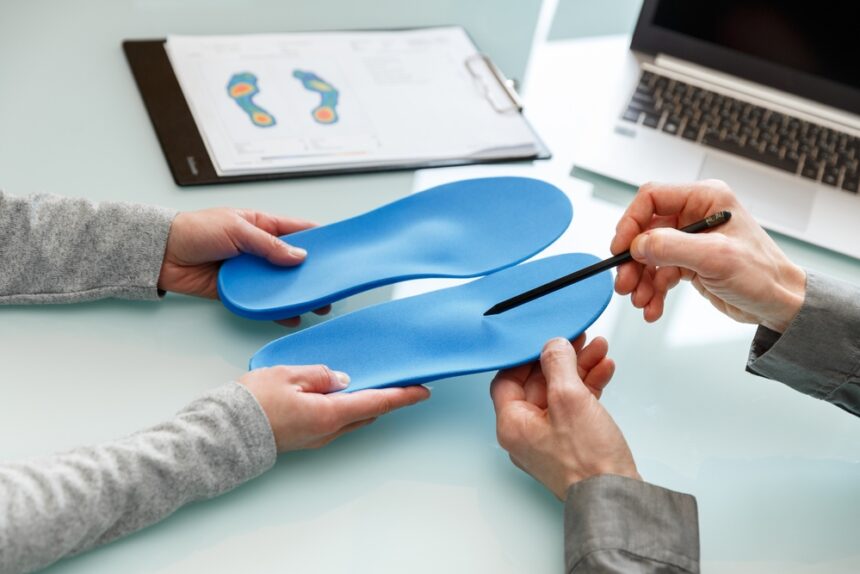Did you know that about 87% of adults have foot pain at some point in their lives? The good news is that new types of shoes can help.
When it comes to finding the right orthotic device to help you manage your condition, there are a lot of factors to consider. It’s important that you select a product that is comfortable, adjustable, and fits your lifestyle. That’s why we put this guide together – so you can find the perfect orthotic device for your needs! We will look at how different types of shoes may impact an orthotic device purchase, provide tips on customization options available, and review other factors such as support levels and proper fit. Whether you struggle with chronic foot pain or need assistance with mobility due to an injury or medical condition, let us help guide the way toward discovering what type of orthotics might work best for you!
Overview of Different Types of Orthotic Devices
Orthotic devices can do wonders for improving mobility and providing comfort, whether you have a biomechanical issue or an amputation. There are custom orthotics and prosthetics, of course, but there are other technologies available too. They can help with gait training, post-operative bracing, custom-made accommodative footwear inserts, and much more. There are many possibilities when it comes to orthotic devices, so be sure to explore the available options and discuss them with a professional before investing in one!
Common Uses for Orthotics
Orthotics have become an increasingly common part of everyday life for many people, as they provide support and stability through their various uses. Whether you are a professional athlete or just hit the gym on occasion, orthotics can be an invaluable tool in improving your well-being. From reducing the shock your feet receive while running to providing additional cushioning during activities like golf, orthotics offer a range of benefits that can make physical activity easier and more enjoyable. Furthermore, they can even aid in treating conditions such as plantar fasciitis and arch pain. If you’re looking to improve performance or resolve aches and pains quickly and safely, orthotics could be just what you need for improved comfort and convenience.
Benefits of Wearing an Orthotic Device
Wearing an above elbow prosthetic arm can be a great way to reap the benefits of orthotics. An orthotic device is designed to improve your posture, reduce muscle fatigue, and help protect your joints. They can also provide support for various activities such as walking, running, and even lifting heavy objects. Furthermore, they’re adjustable, so you can customize them to fit perfectly and provide maximum comfort. There’s no doubt that orthotics are a valuable addition to any above-elbow prosthetic arm user – helping them move more efficiently and easily while providing extra protection from pain or injury.
Moreover, whether you suffer from chronic heel or ankle pain, or just want to provide extra support for your feet, wearing an orthotic device can help to relieve aches and pains, reduce issues with overpronation or flat-footing, improve the efficiency of your step, and even prevent long-term injuries.
How To Choose the Right Orthotic Device For You
When it comes to selecting the right orthotic device for you, there are a few factors to consider. First, consider your lifestyle and how the device will fit into it. Different types of prosthetics, such as ankle-foot orthosis (AFOs) or knee–ankle–foot orthosis (KAFOs), are better suited for some types of activities than others. Additionally, think about any specific conditions you have that may affect your choice. An orthopedic surgeon can help recommend the best option to match your needs. Lastly, don’t forget the cost —certain types of prosthetics are covered by insurance plans, while others may require additional expenses. Once you’ve weighed these elements carefully, you’ll be able to confidently select an orthotic device that meets both your individual needs and budget.
Tips for Adjusting and Caring for Your Orthotics
Taking care of prosthetic leg parts like orthotics can be a challenge. But it doesn’t have to be hard! Here are some helpful tips for making your prosthetics comfortable and ensuring that you get the most from them. Firstly, make sure you put your prosthetics on in the same order each time to create a consistent fit. Secondly, if your prosthetics feel too tight or uncomfortable after a few hours of wear, take them off as soon as possible and adjust as needed. Finally, it’s important to take care of your prosthetics to ensure they last – keep them clean and make sure all components are in good working order. Following these simple steps will help you enjoy a more comfortable prosthetic experience!
Pros and Cons of Different Orthotic Materials
Deciding what material to use for orthotics can be tricky. There are many different materials out there, each with its own pros and cons. Carbon graphite is lightweight and strong but can break down over time. Leather and foam are lightweight but may stretch or tear more easily than other materials. Polyurethane is durable and helps support the foot, but can be quite rigid. Finally, cork-rubber combinations provide excellent support while being more flexible than polyurethane. Ultimately, which material you choose depends on your needs and budget—it pays to do your research before making a decision!
Conclusion
In summary, orthotic devices are becoming increasingly popular and offer a great range of benefits. Therefore, it is no surprise that people spend nearly $3.5 billion on them.
They are often used in the treatment of various health conditions and can be tailored to meet individual needs and preferences. It is important to choose the right orthotic device for you since ill-fitting or inappropriate ones can cause further discomfort or injury. As for adjusting and caring for an orthotic device, it is essential to ensure that it fits correctly, gently stretch any tight spots over time, use shock absorbent insoles when necessary, avoid daily washing of fabric materials if possible, store them properly at night, and replace them as per manufacturer’s instructions. Moreover, the pros and cons of different orthotic materials should be taken into consideration when selecting one. Ultimately, orthotic devices could prove to be an invaluable investment for your health and well-being – so make sure to explore your options before making a purchase!









